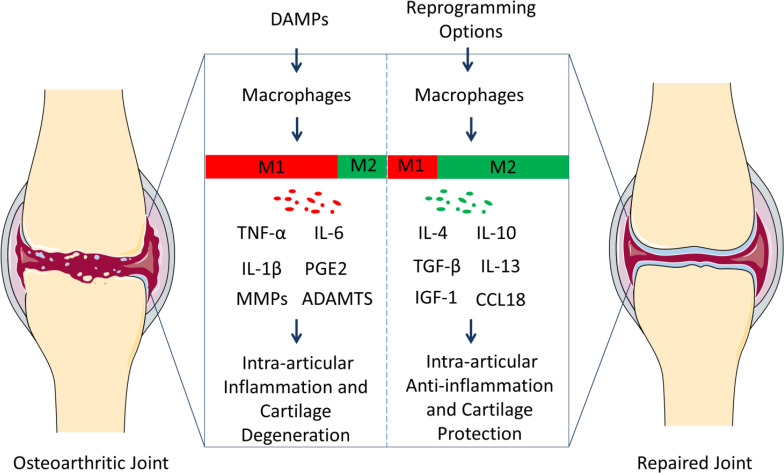Figure 1.
Polarization of macrophages in knee osteoarthritis (OA) pathology and repair. Resident macrophages in the synovium have two general phenotypes, M1 and M2. Macrophages tend to serve as M1 phenotype under the inflammation responses caused by damage-associated molecular patterns (DAMPs). M1 subgroups can contribute to OA progression through releasing inflammatory and degenerative molecules including TNF-α, IL-6, IL-1β, PGE2, MMPs, ADAMTS, which leads to synovitis, the death of chondrocytes, and the degradation of extracellular matrix (ECM). However, macrophages can be reprogrammed, and the M2 population can contribute to OA treatment via up-regulating anti-inflammatory and regenerative molecules (IL-4, IL-10, TGF-β, IL-13, IGF-1, and CCL18). And the microenvironment can be constructed, where the tissues in the osteoarthritic joints can repair. We suggest that reprograming macrophage phenotypes can be therapeutic targets for the prevention and treatment of OA.

